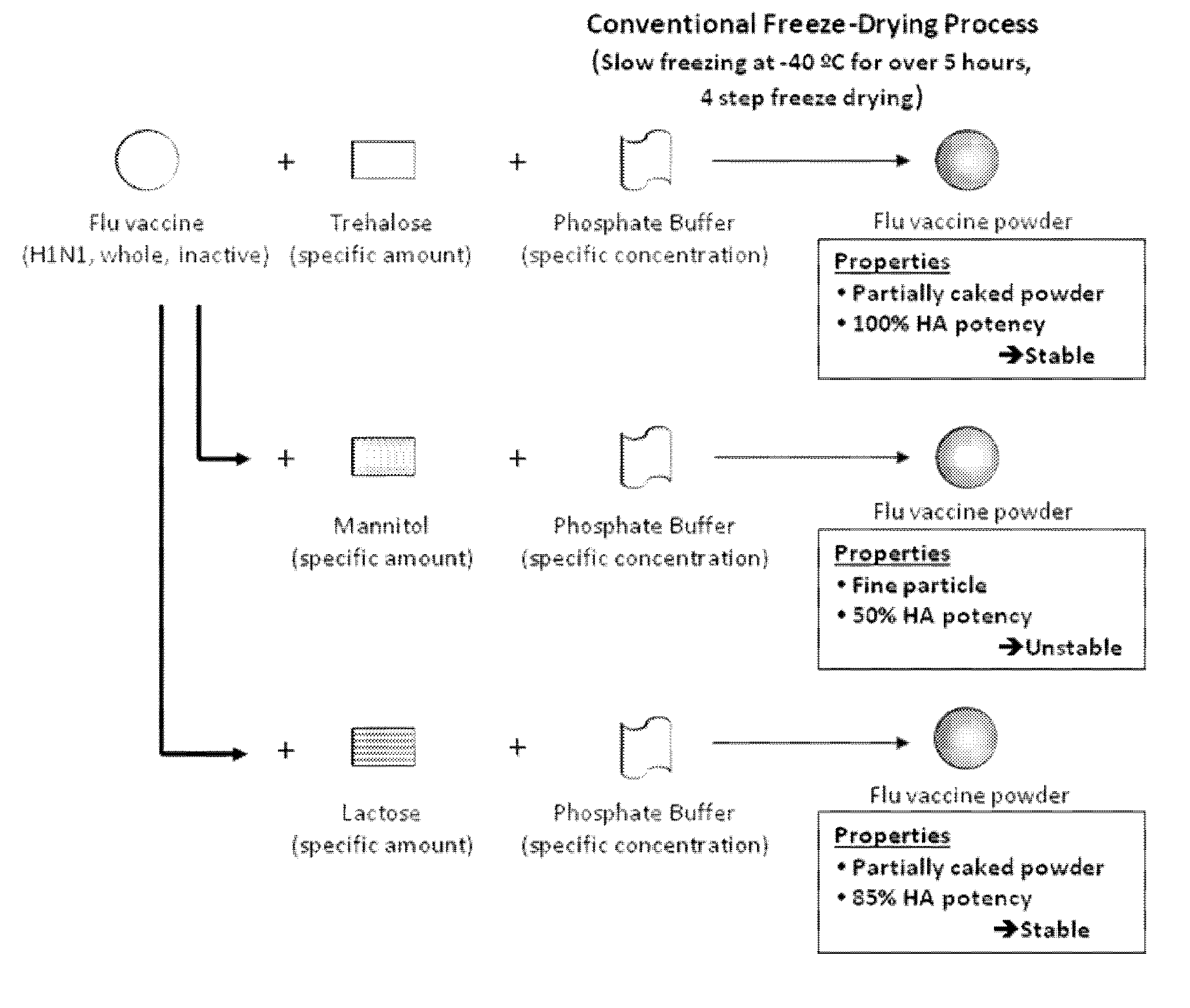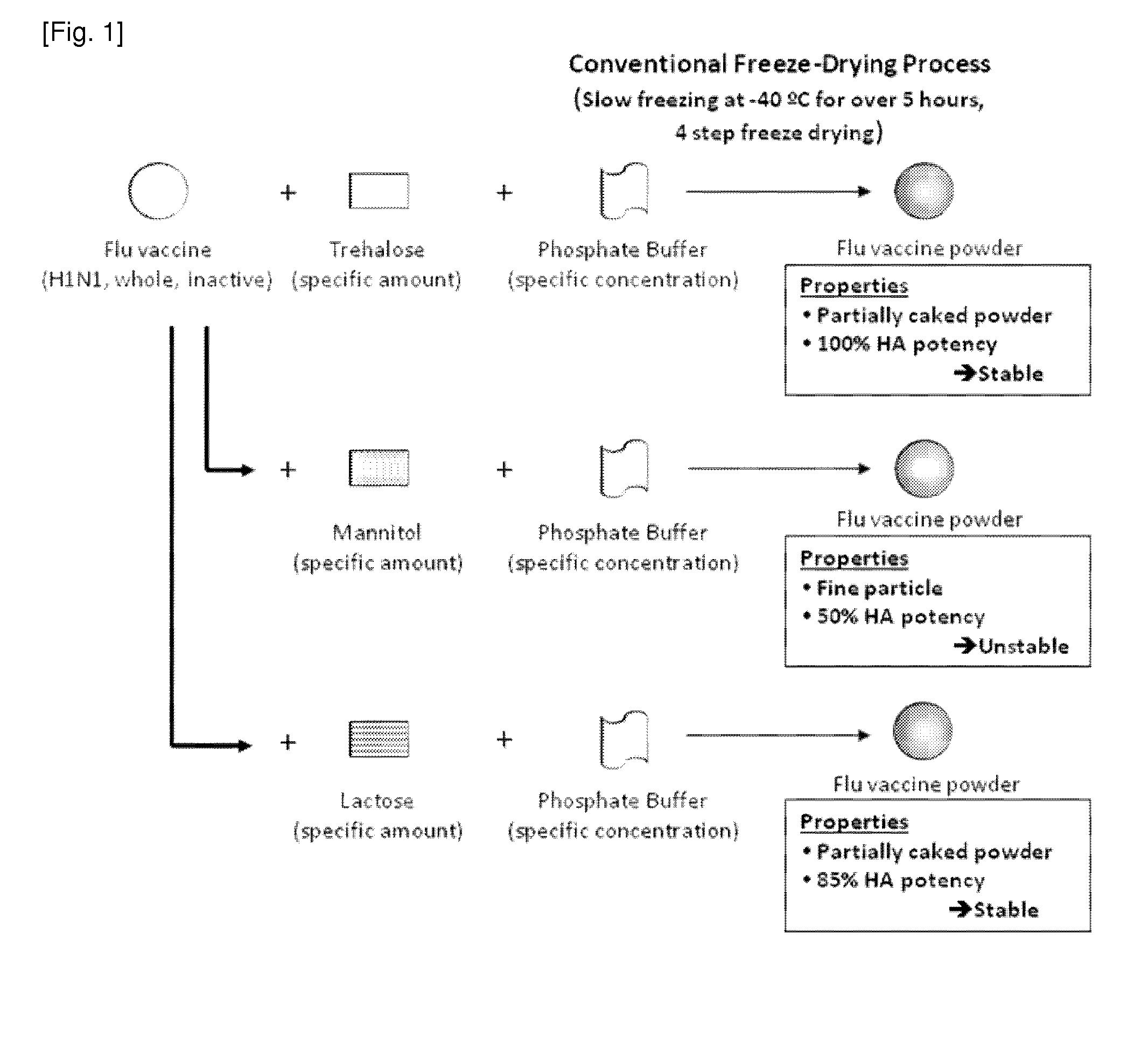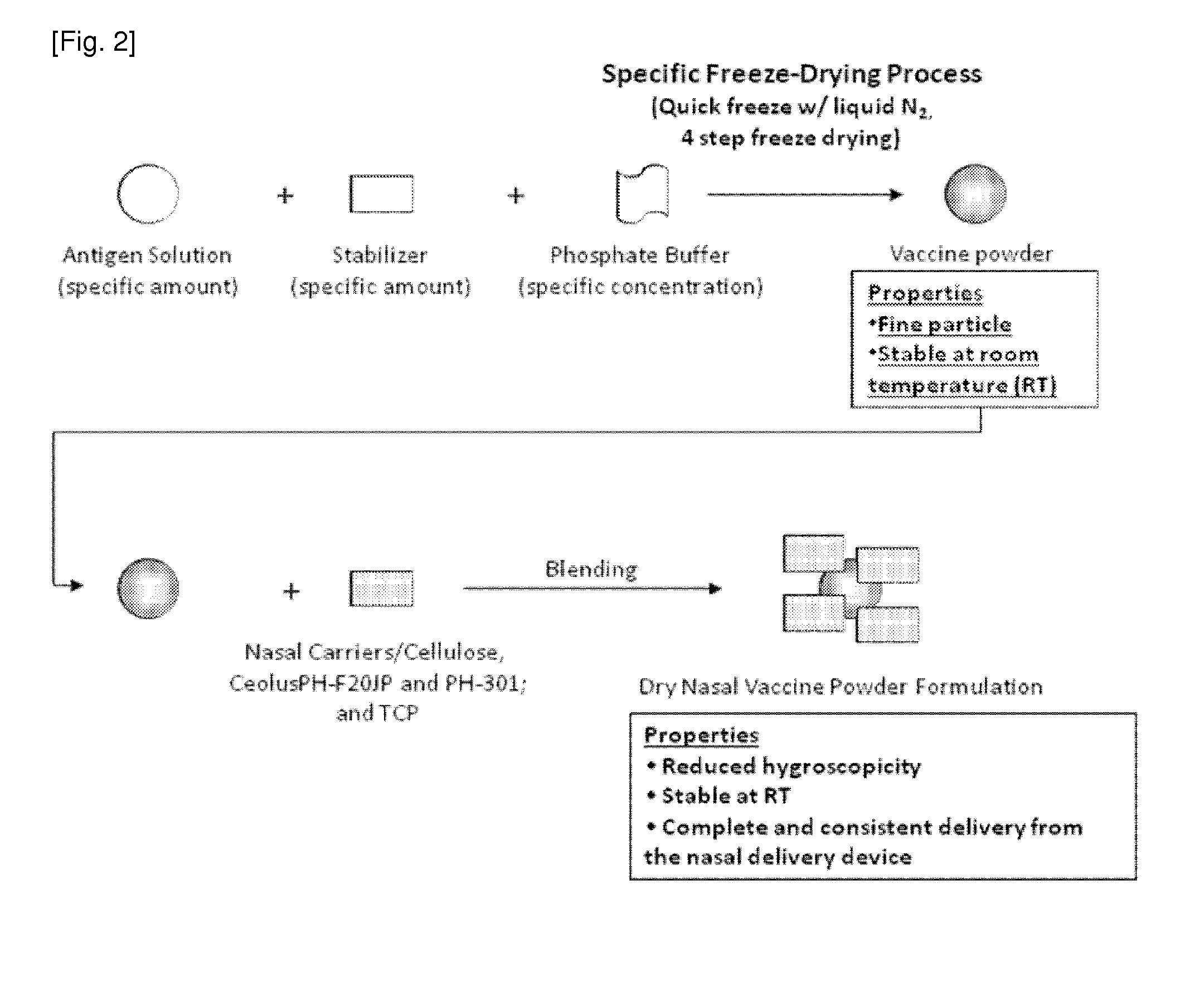Methods and compositions for intranasal delivery
a technology of intranasal and composition, applied in the direction of antibody medical ingredients, immunological disorders, antibacterial agents, etc., can solve the problems of ice damage to the antigen in the vaccine, high storage cost, and inability to withstand ice, so as to improve the flowability of the powder, and reduce the hygroscopicity of the powder
- Summary
- Abstract
- Description
- Claims
- Application Information
AI Technical Summary
Benefits of technology
Problems solved by technology
Method used
Image
Examples
example 1
Preparation and Testing of Whole Inactive H1N1 Dry Vaccine Powder Formulation
[0108]In this example, various dry powder formulations of the seasonal flu vaccine (H1N1) are generated and tested. A preferred embodiment of the invention is also tested verses traditional liquid nasal and injection formulations of the seasonal flu vaccine.
example 1a
Preparation of Influenza Vaccine (H1N1) Powders Using Non-Quick Freezing Techniques
[0109]In this experiment, various antigen stabilizers are used in a conventional freeze-drying process to generate vaccine powders, which are then examined for consistency and stability. In a 10 mL bottle, 0.4 mL of a 1.6 mg / mL solution of whole inactive influenza (H1N1, strain A / Brisbane / 59 / 2007, The Chemo-Sero-Therapeutic Research Institute) is combined with a stabilizer (13.6 mg) in 0.4 mL of Phosphate Buffered Saline (PBS or phosphate buffer), pH 7.4, to give a final antigen to stabilizer ratio of 1:21. The mixture is slowly frozen at −40 degrees C. for over 5 hours. The frozen composition is then freeze dried in four steps: −40 degrees C., less than 140 mTorr for 24 hr; 30 degrees C., less than 130 mtorr for 24 hr; −10 degrees C., less than 100 mtorr for 4 hr; and 20 C, less than 50 mtorr for 4 hr. The resulting lyophilized powder contains 29 micro g of influenza vaccine protein per 1 mg of influ...
example 1b
Preparation of a Nasal Influenza (H1N1) Vaccine Powder Using a Quick Freezing Process
[0110]In this experiment, various stabilizers are used in a quick freezing and drying process to generate vaccine powders, which are then examined for consistency and stability. The general manufacturing process is outlined in FIGS. 2 and 3; specific details relating to the generation of a H1N1 nasal vaccine formulation are provided infra. In a 10 mL bottle, 0.4 mL of a 1.6 mg / mL solution of whole inactive influenza (H1N1, strain A / Brisbane / 59 / 2007) is combined with a stabilizer (13.6 mg) in 0.4 mL of Phosphate Buffered Saline (PBS or phosphate buffer), pH 7.4, to give a final antigen to stabilizer ratio of 1:21. The mixture is quickly frozen in liquid nitrogen for 10 minutes and an influenza powder is generated by a four step freeze-drying process: −40 degrees C., less than 140 mtorr for 24 hr; −30 degrees C., less than 130 mtorr for 24 hr; −10 degrees C., less than 100 mtorr for 4 hr; and 20 C, le...
PUM
| Property | Measurement | Unit |
|---|---|---|
| Fraction | aaaaa | aaaaa |
| Fraction | aaaaa | aaaaa |
Abstract
Description
Claims
Application Information
 Login to View More
Login to View More - R&D
- Intellectual Property
- Life Sciences
- Materials
- Tech Scout
- Unparalleled Data Quality
- Higher Quality Content
- 60% Fewer Hallucinations
Browse by: Latest US Patents, China's latest patents, Technical Efficacy Thesaurus, Application Domain, Technology Topic, Popular Technical Reports.
© 2025 PatSnap. All rights reserved.Legal|Privacy policy|Modern Slavery Act Transparency Statement|Sitemap|About US| Contact US: help@patsnap.com



